Abstract
A small pneumatic cuff inflated around the knee was used to produce tourniquet paralysis in baboons. A cuff pressure of 1,000 mm Hg maintained for one to three hours produced paralysis of distal muscles lasting up to three months. Nerve conduction studies showed that most of the motor fibres to the abductor hallucis muscle were blocked at the level of the cuff and that they conducted impulses normally in their distal parts. There was a significant correlation between the duration of compression and that of the subsequent conduction block. When tested two to three weeks after the tourniquet, the amplitude of the response of m. abductor hallucis to nerve stimulation distal to the cuff was usually slightly reduced compared with the precompression figure. This was assumed to mean that a small proportion of the motor fibres had undergone Wallerian degeneration as a result of compression. Maximal motor conduction velocity was reduced in recovering nerves. It was also reduced when a cuff pressure of 500 mm Hg was used, which was insufficient to produce persistent conduction block. In such cases a reduced velocity without evidence of block could be demonstrated 24 hours after compression. Ascending nerve action potentials were recorded from the sciatic nerve in the thigh, with stimulation at the ankle. Before compression the fastest afferent fibres had a significantly higher velocity than the fastest motor fibres in the same nerve trunk. Results after compression suggested that the high-velocity afferent fibres had a susceptibililty to the procedure similar to that of the fastest motor fibres.
Full text
PDF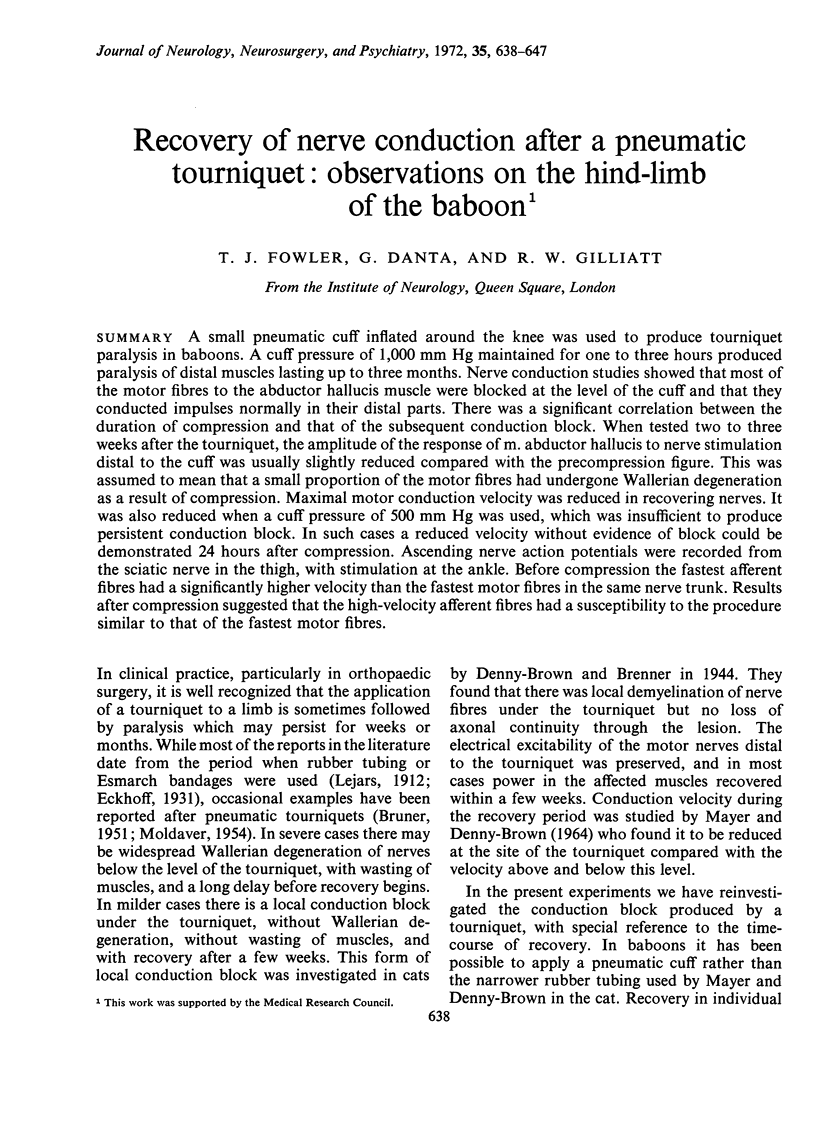
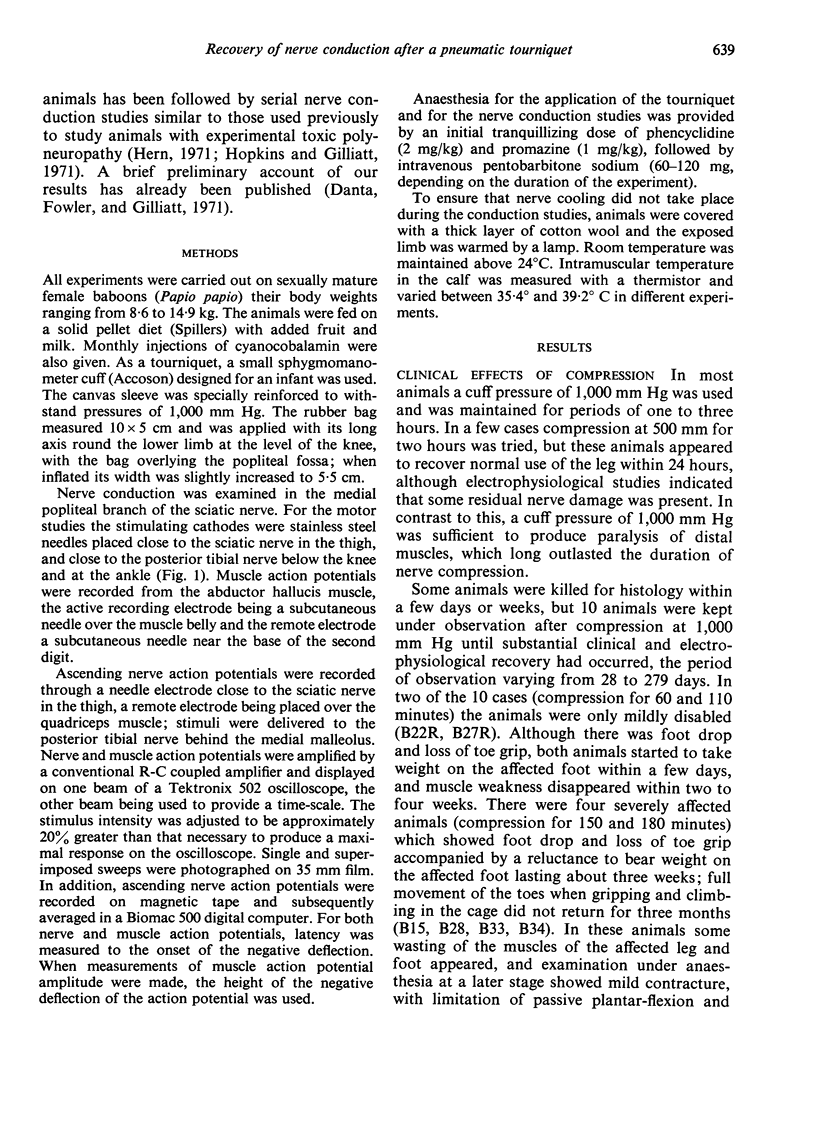
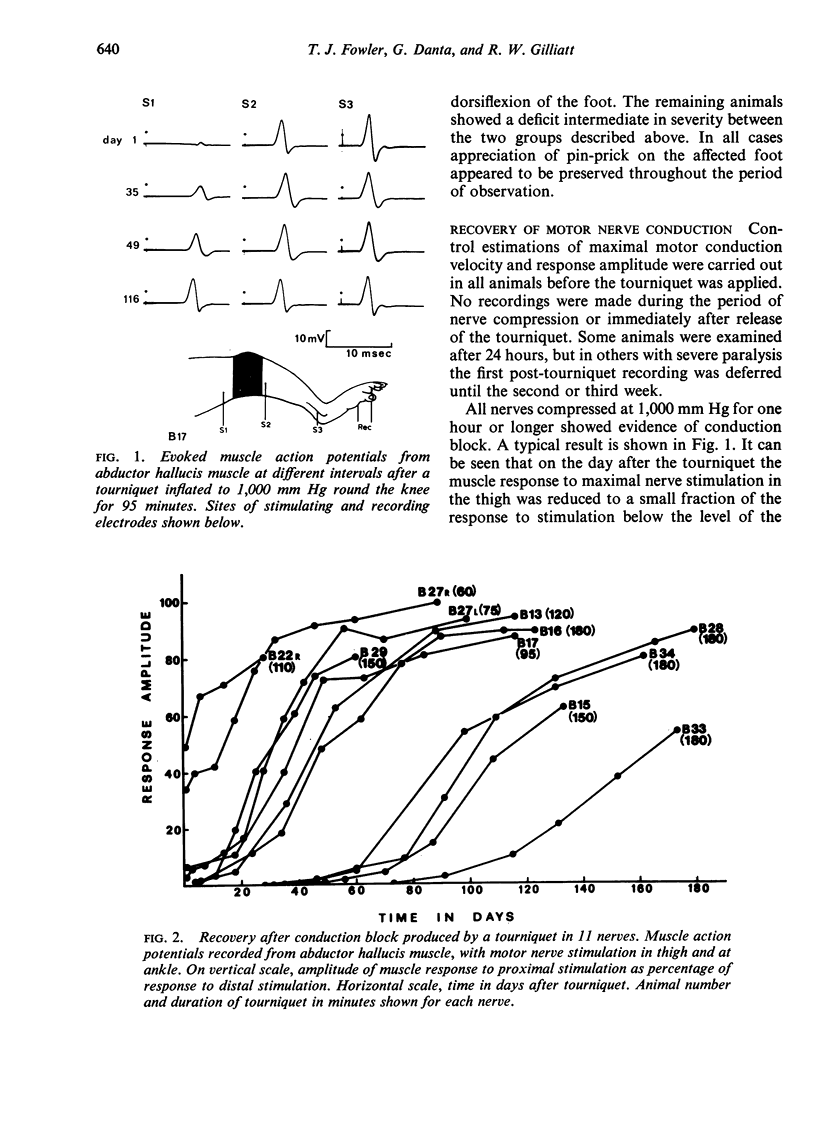
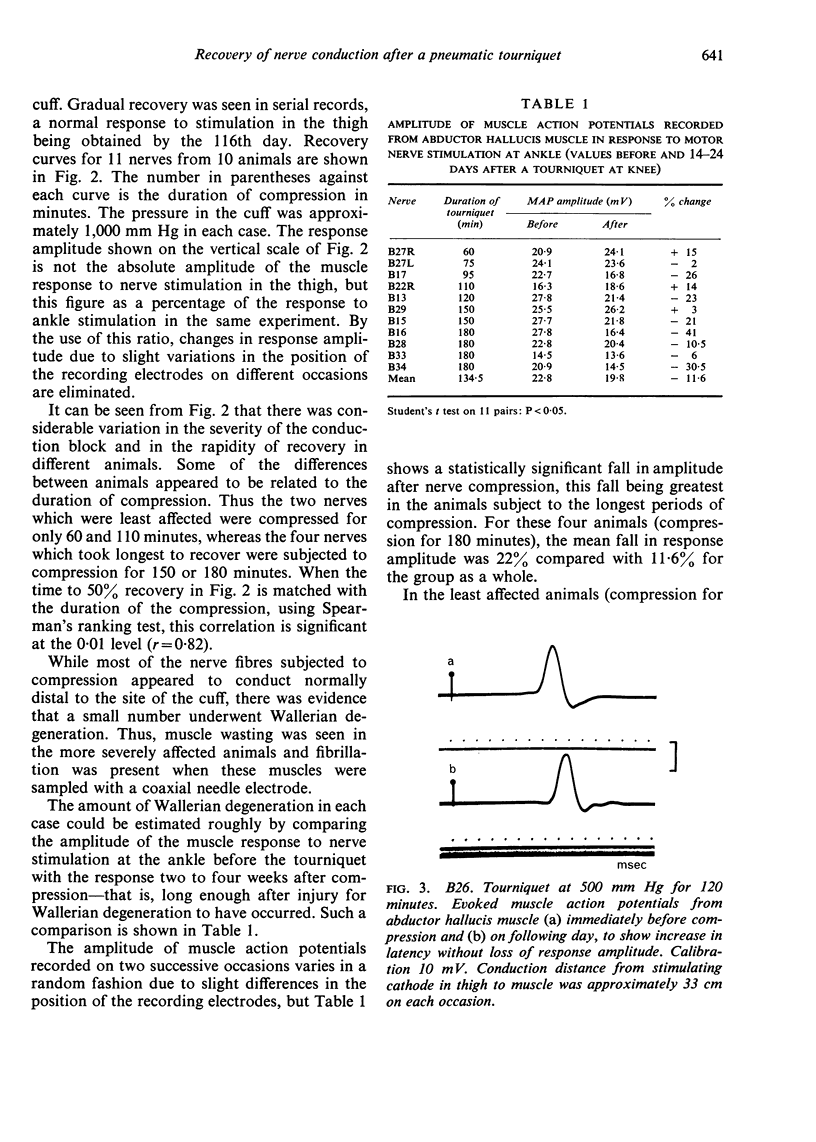
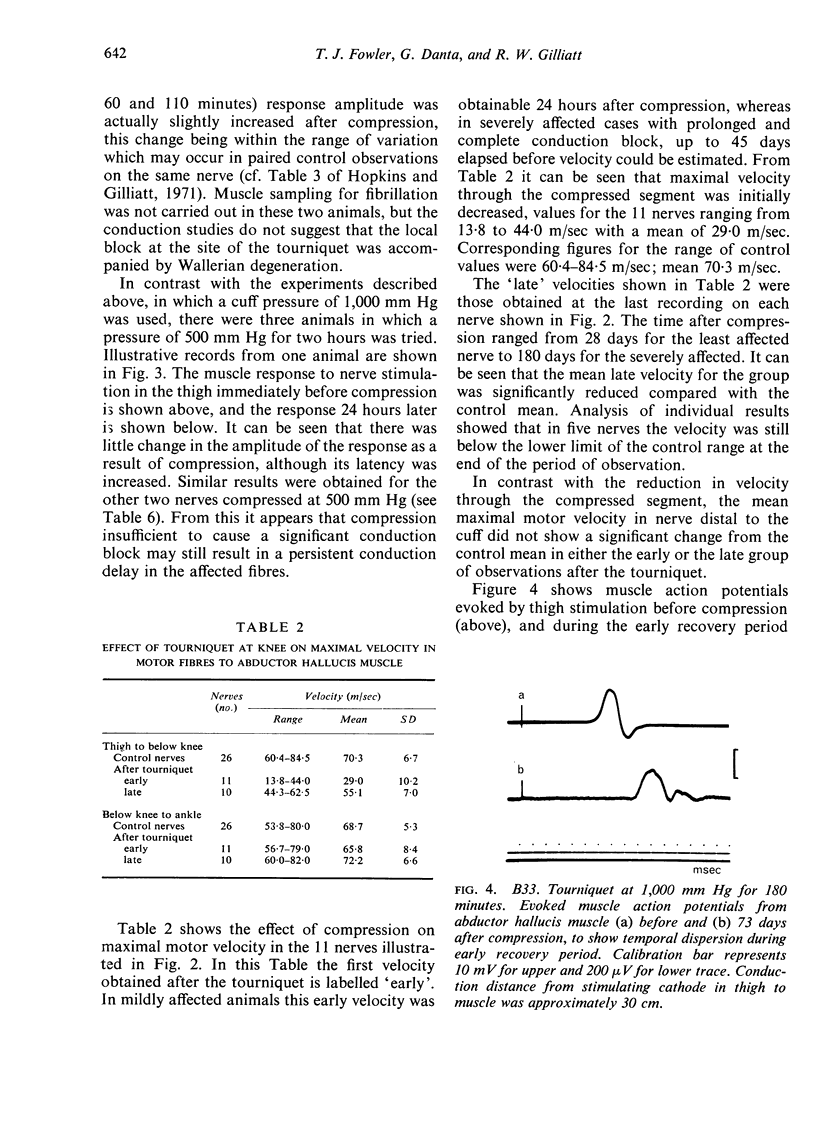
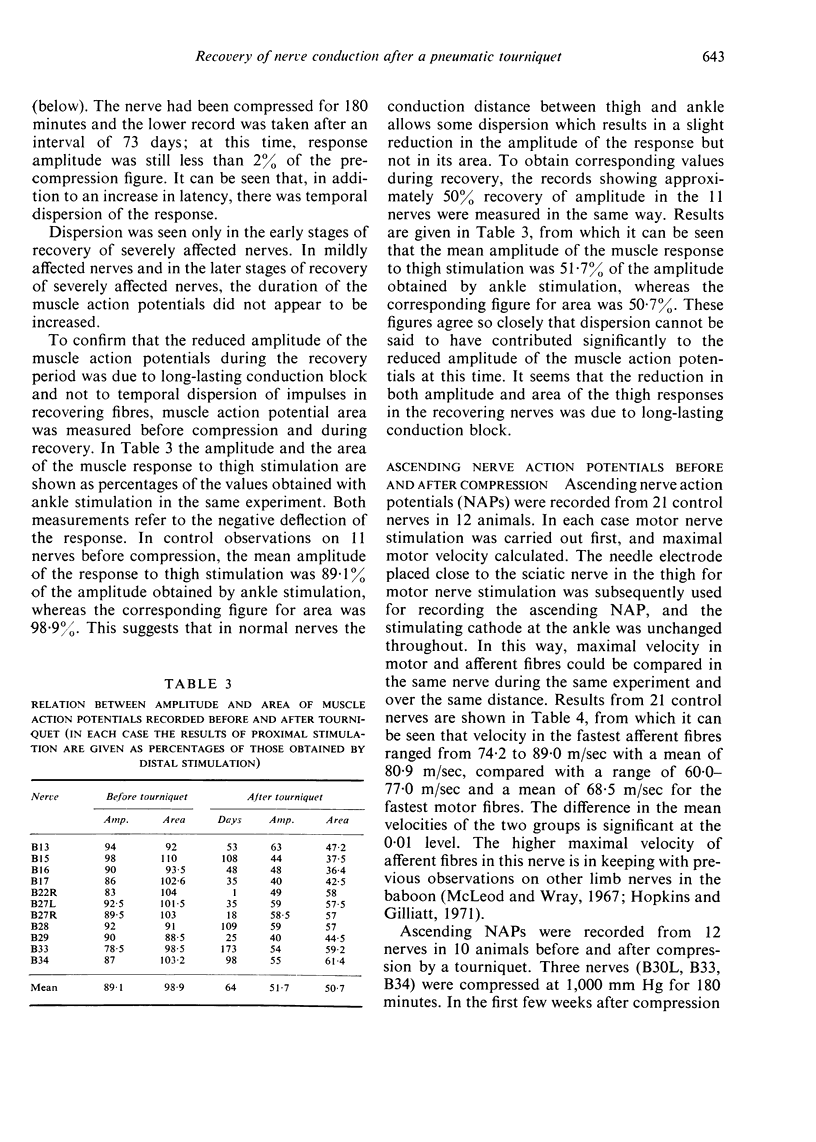
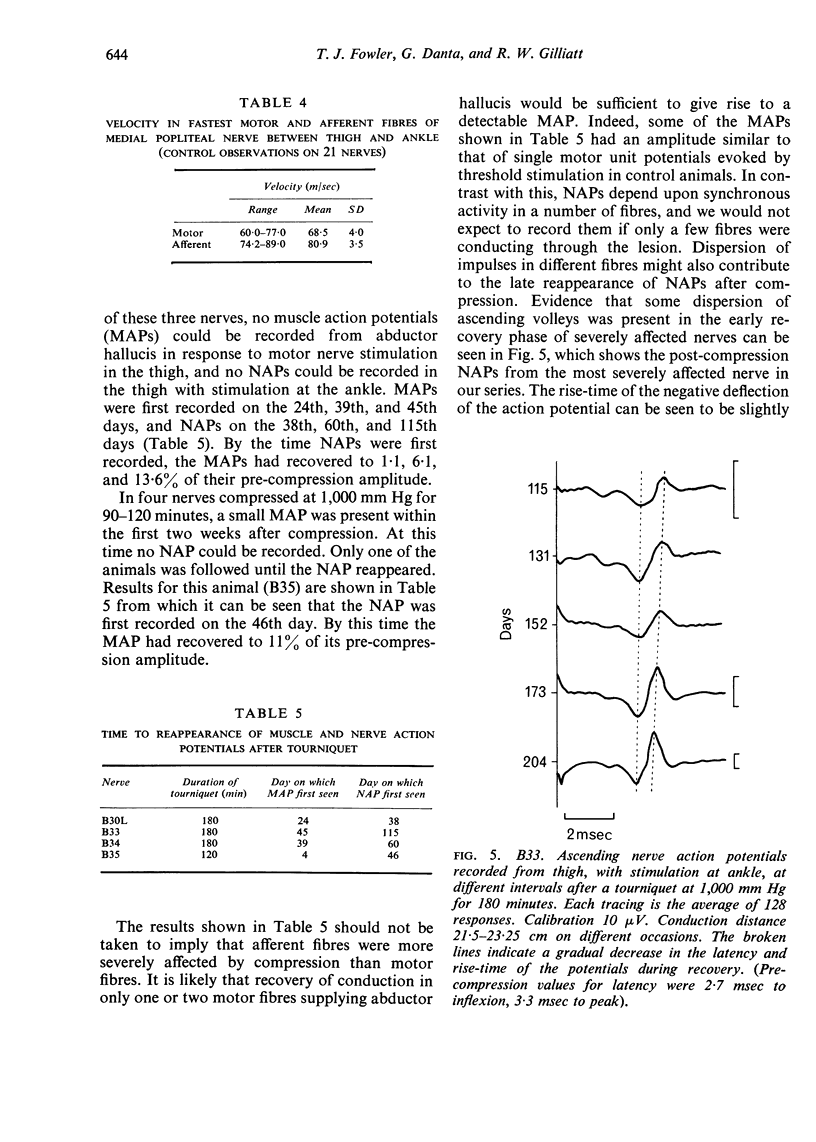
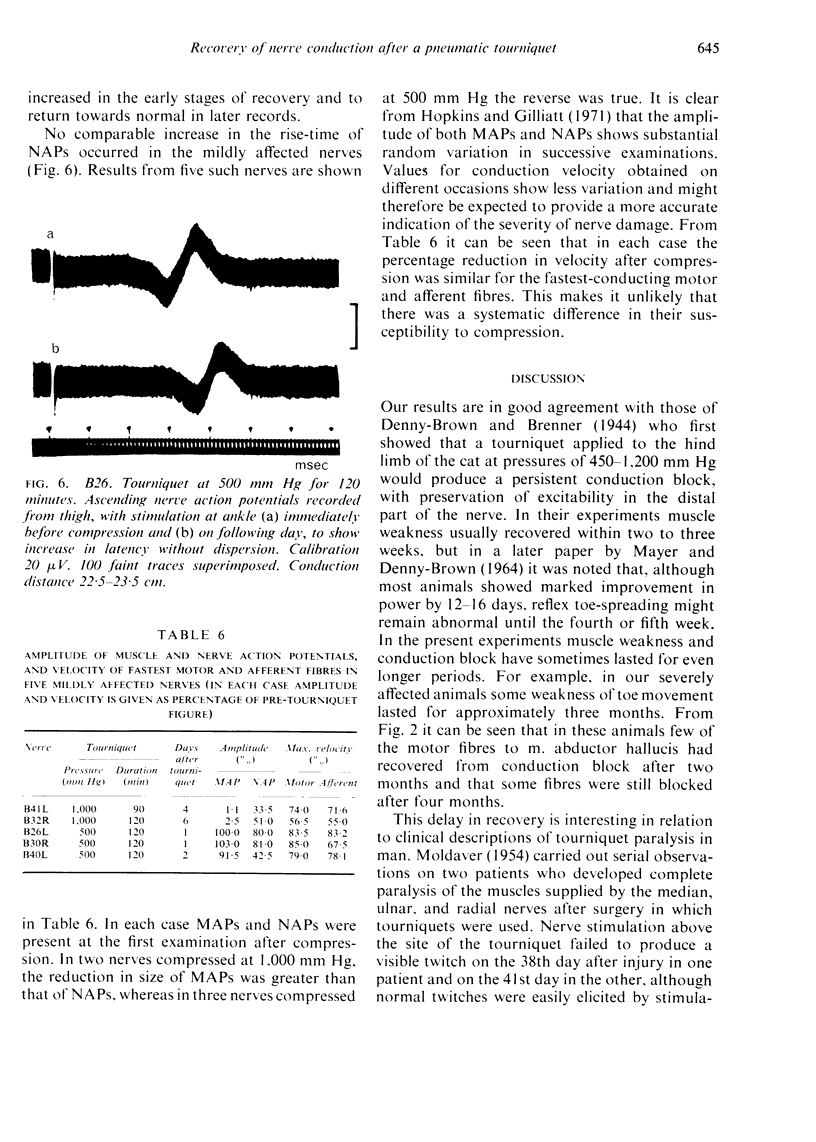
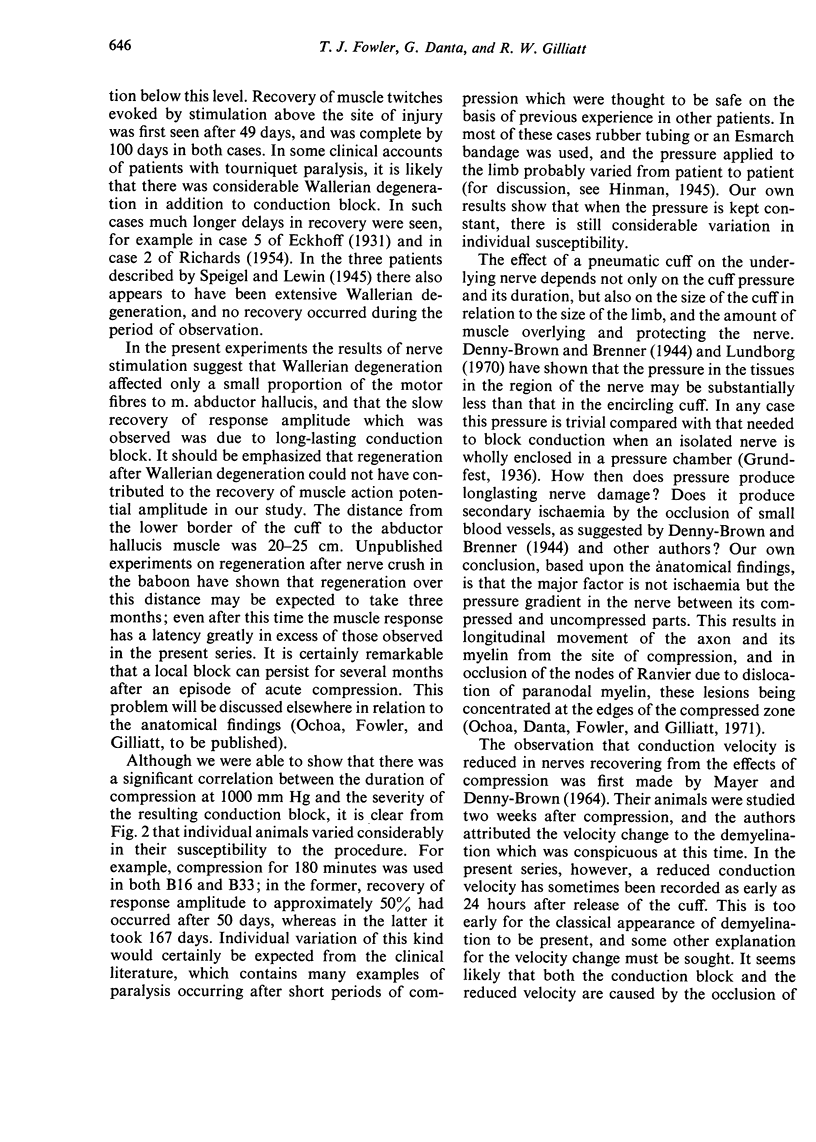

Selected References
These references are in PubMed. This may not be the complete list of references from this article.
- BRUNER J. M. Safety factors in the use of the pneumatic tourniquet for hemostasis in surgery of the hand. J Bone Joint Surg Am. 1951 Jan;33 A(1):221–224. [PubMed] [Google Scholar]
- Danta G., Fowler T. J., Gilliatt R. W. Conduction block after a pneumatic tourniquet. J Physiol. 1971 May;215(1):50P–52P. [PubMed] [Google Scholar]
- Hopkins A. P., Gilliatt R. W. Motor and sensory nerve conduction velocity in the baboon: normal values and changes during acrylamide neuropathy. J Neurol Neurosurg Psychiatry. 1971 Aug;34(4):415–426. doi: 10.1136/jnnp.34.4.415. [DOI] [PMC free article] [PubMed] [Google Scholar]
- MAYER R. F., DENNY-BROWN D. CONDUCTION VELOCITY IN PERIPHERAL NERVE DURING EXPERIMENTAL DEMYELINATION IN THE CAT. Neurology. 1964 Aug;14:714–726. doi: 10.1212/wnl.14.8_part_1.714. [DOI] [PubMed] [Google Scholar]
- MOLDAVER J. Tourniquet paralysis syndrome. AMA Arch Surg. 1954 Feb;68(2):136–144. doi: 10.1001/archsurg.1954.01260050138002. [DOI] [PubMed] [Google Scholar]
- McLeod J. G., Wray S. H. Conduction velocity and fibre diameter of the median and ulnar nerves of the baboon. J Neurol Neurosurg Psychiatry. 1967 Jun;30(3):240–247. doi: 10.1136/jnnp.30.3.240. [DOI] [PMC free article] [PubMed] [Google Scholar]
- Ochoa J., Danta G., Fowler T. J., Gilliatt R. W. Nature of the nerve lesion caused by a pneumatic tourniquet. Nature. 1971 Sep 24;233(5317):265–266. doi: 10.1038/233265a0. [DOI] [PubMed] [Google Scholar]


